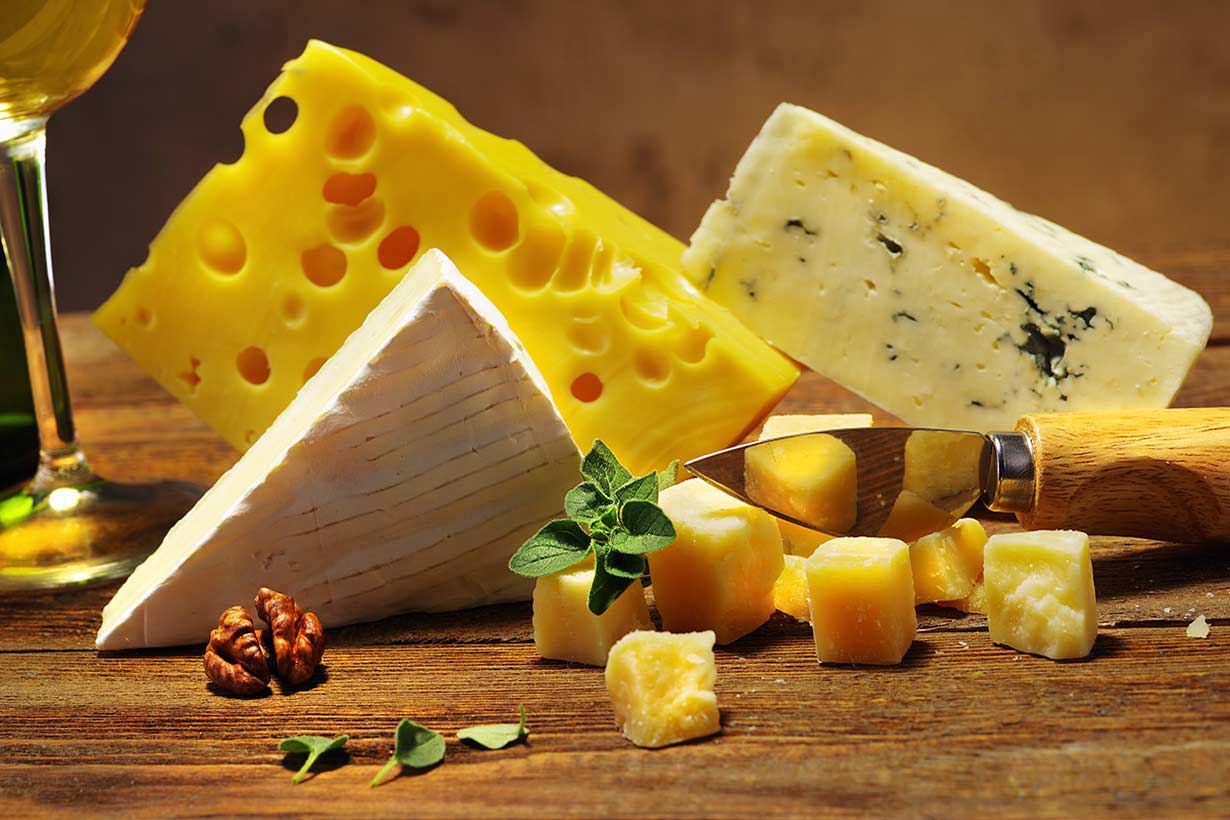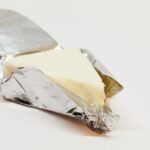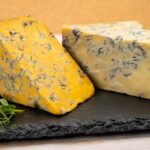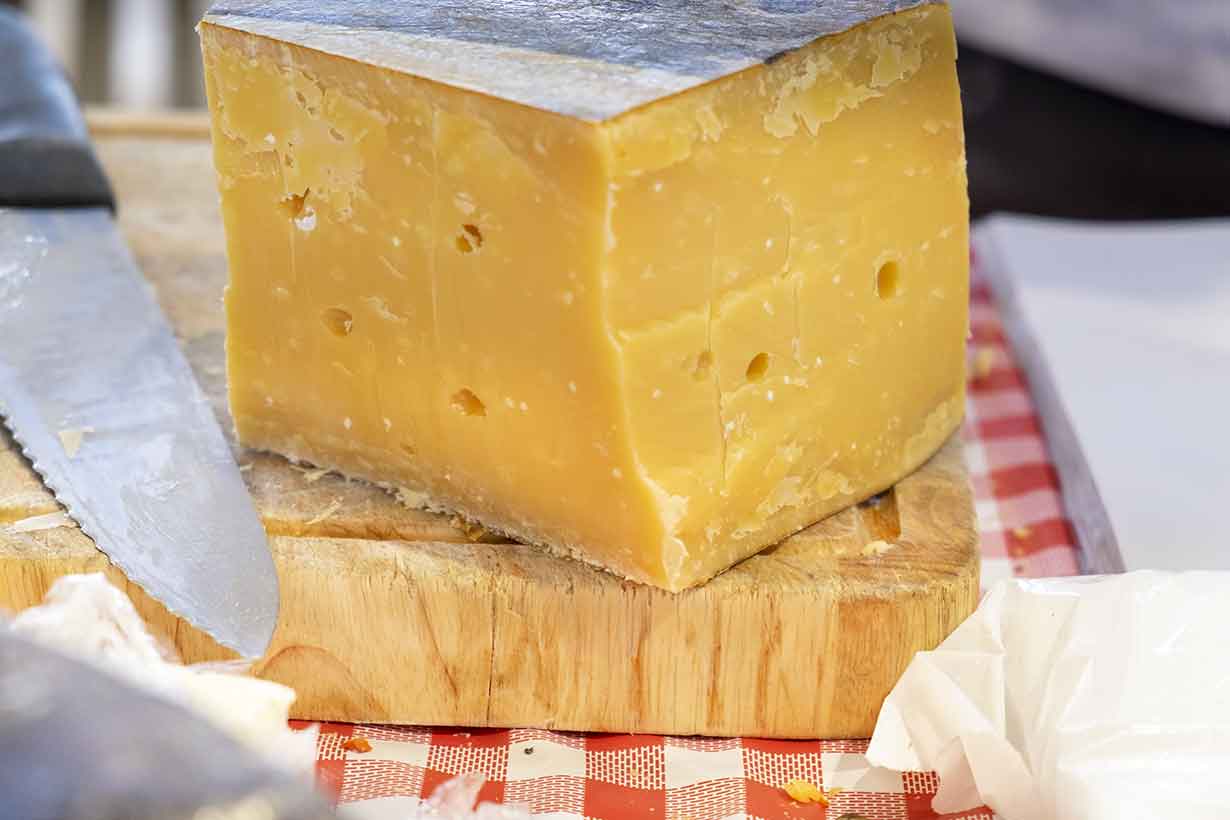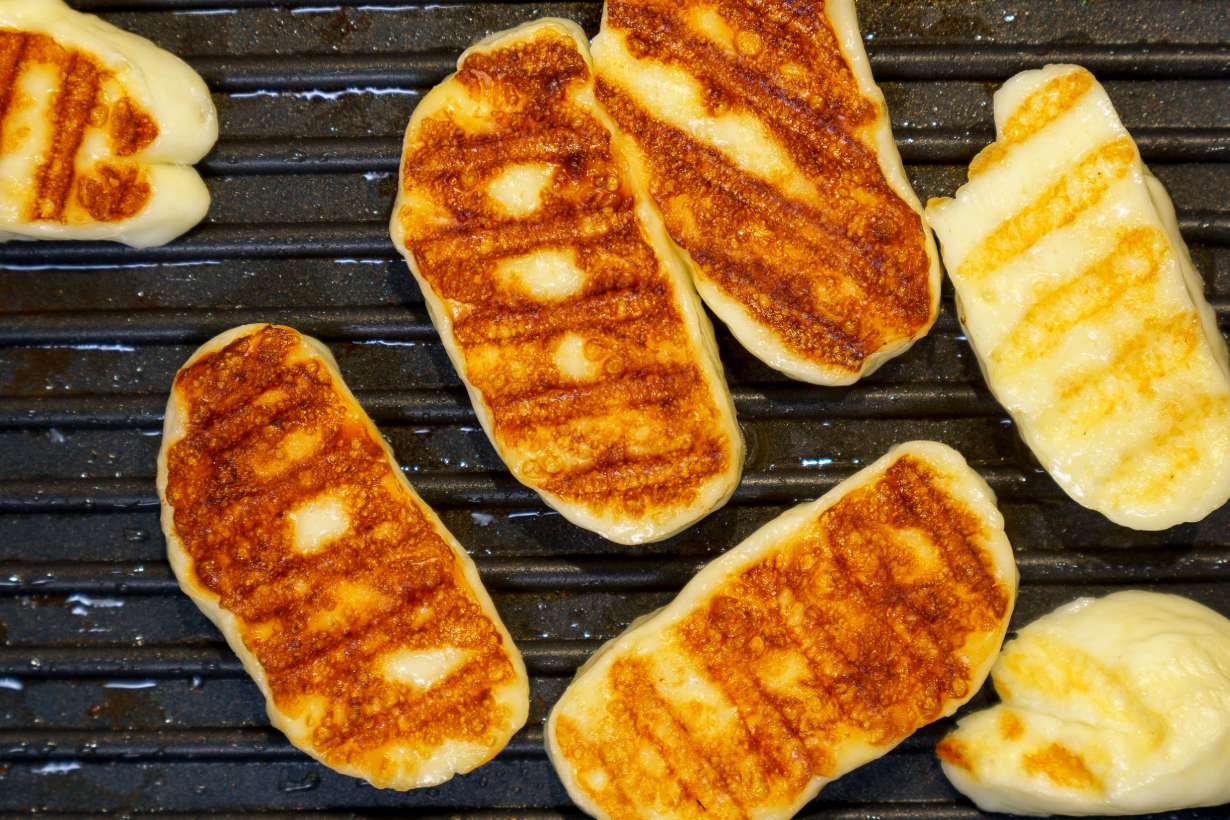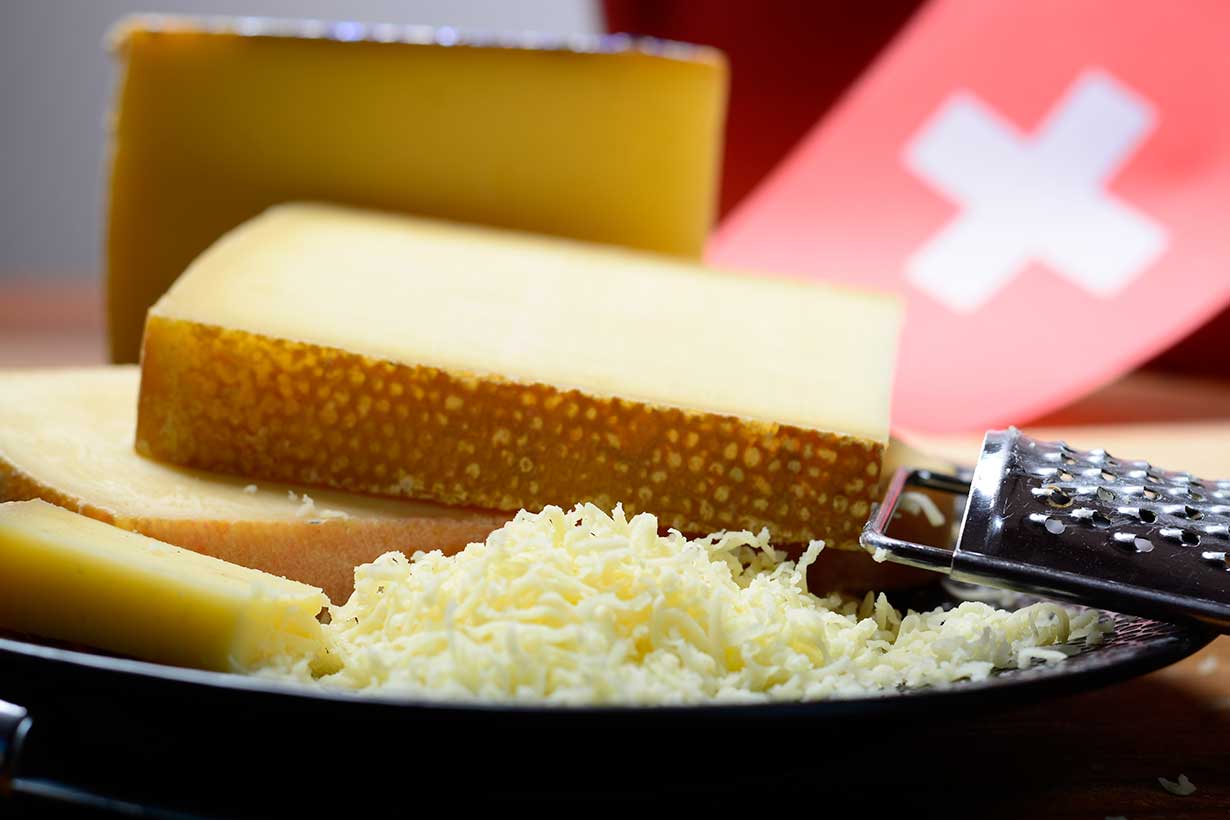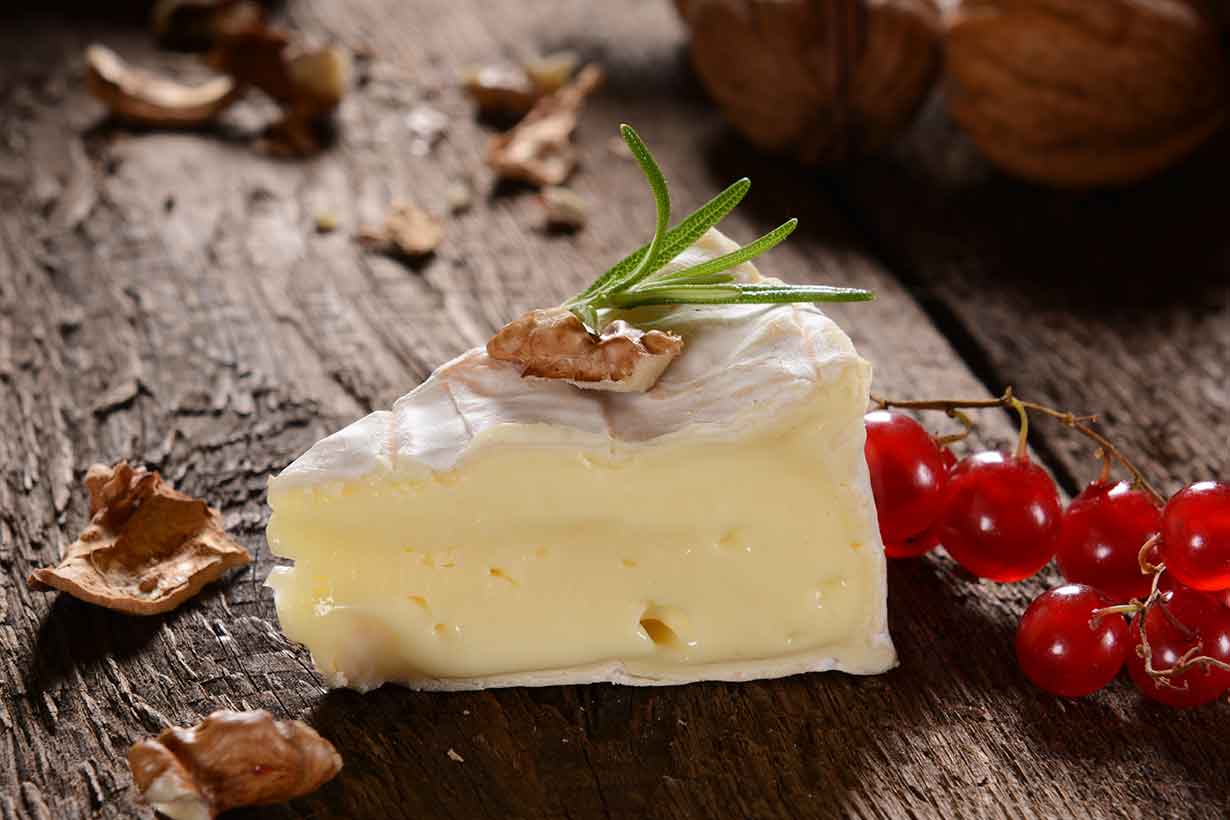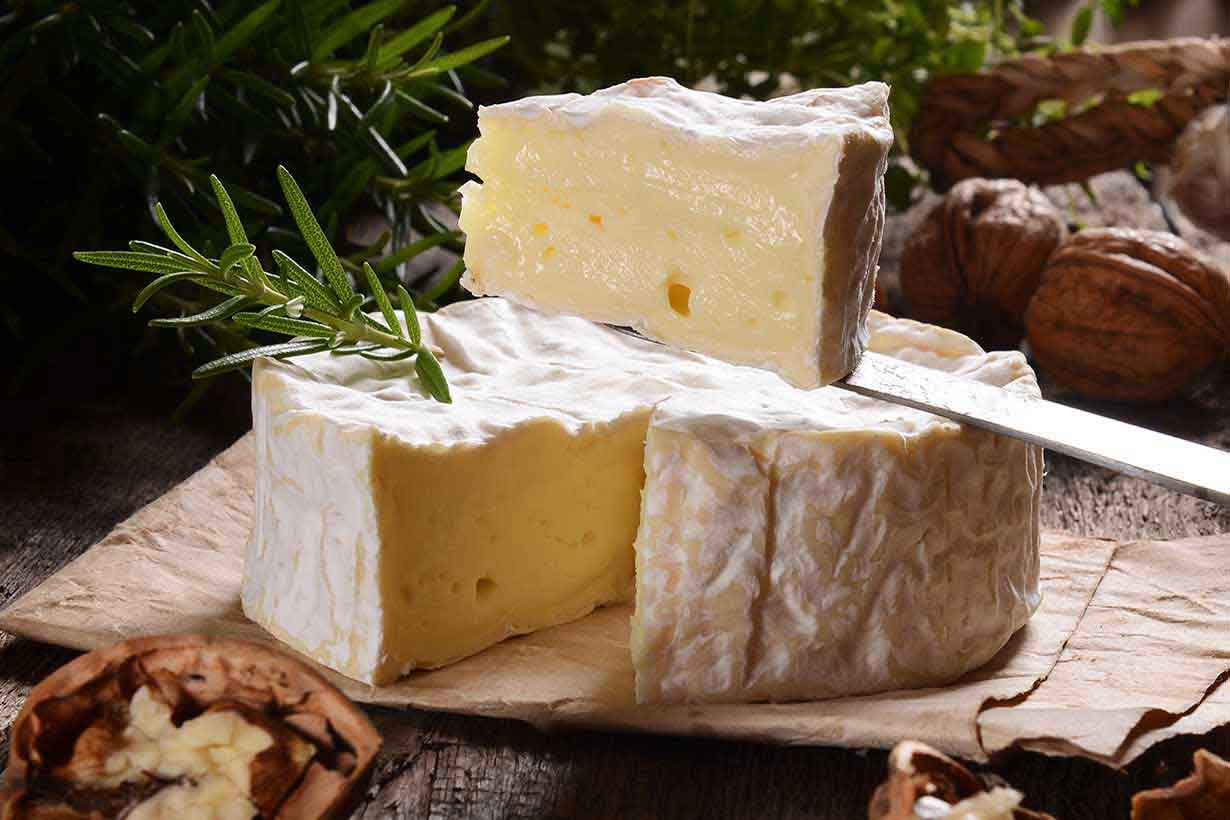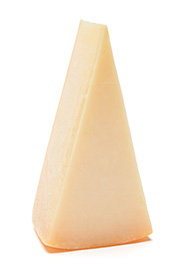
Cheddar is the most popular type of cheese in the world.
There are good reasons for that too.
For one, it tastes delicious.
Whether served by itself or as an accompaniment, not many foods beat a good Cheddar cheese.
This article takes a look at the origin, nutrition profile and health benefits (and concerns) of Cheddar.
Additionally, there are some delicious recipe ideas too.
What is Cheddar Cheese?
Cheddar is a pale-yellow, medium-hard cheese made from cow’s milk.
Occasionally you may also find orange varieties of the cheese due to the use of the food coloring annatto.
The origins of the cheese lie in the town of Cheddar, a small town in the region of Somerset, England.
However, Cheddar cheese is now made throughout the world.
This popular cheese has a very long history; in fact, the earliest records go back to the 12th century.
The first reference to Cheddar comes in 1170 in a pipe roll (a traditional English financial record) showing King Henry II purchasing 4,640 kg of the cheese (1).
Alongside Wensleydale cheese, Cheddar is one of the oldest English cheese varieties.
Cheddar is also a primary ingredient in many foods, and it is the main ingredient in many sliced ‘American cheese’ products.
It is also the primary ingredient in other processed cheese products like The Laughing Cow cheese.
Types of Cheddar
Notably, the taste and texture of Cheddar can vary a lot depending on the length of aging.
Cheddar typically undergoes a fermentation process that lasts between 3 and 24 months.
A shorter aging time will produce a mild, creamy cheese with a soft texture.
This is why cheese fermented for only several weeks (like Camembert and Brie) has a very soft texture.
On the other hand, longer-aged cheese will display sharp, tangy, and pungent flavors.
These well-aged cheeses will also have a crumbly texture and may possibly contain calcium lactate crystals.
Interestingly, these crystals are formed when the proteins in cheese break down as part of the aging process. They have an enjoyable crunchy texture.
However, these crystals are not unique to Cheddar, and other long-aged varieties of cheese such as Parmesan experience the same.
Cheddar Classification System
Depending on the aging process, there are different names to classify Cheddar cheese.
The table below shows these different classifications (1);
| Type of Cheddar | Length of Aging (minimum) |
| Mild | 3 months |
| Medium | 5-6 months |
| Mature | 9 months |
| Extra Mature | 15 months |
| Vintage | 18+ months |
It is also worth remembering that the longer the aging, the less lactose cheese has.
For this reason, extra mature and vintage varieties of Cheddar would be a good option for those with lactose sensitivities.
Nutrition Facts
The tables below show the calorie, vitamin, and mineral content of a typical Cheddar cheese per 100 grams (2);
Macronutrients
| Calories / Macronutrient | Amount (Kcal / Grams) |
| Calories | 403 kcal |
| Carbohydrate | 1.3 g |
| Fiber | 0 g |
| Sugar | 0.5 g |
| Fat | 33.1 g |
| Saturated Fat | 21.1 g |
| Monounsaturated Fat | 9.4 g |
| Polyunsaturated Fat | 0.9 g |
| Omega-3 | 365 mg |
| Omega-6 | 577 mg |
| Protein | 24.9 g |
As shown, cheese is relatively high in energy and contains 403 calories per 100 g.
It is also a great source of protein and provides 24.9 grams per 100g, a similar amount to meat and fish.
Micronutrients
Here is the vitamin and mineral profile;
| Vitamin | Amount (% DV) |
| Vitamin A | 29% |
| Vitamin B2 | 22% |
| Vitamin B12 | 14% |
| Folate | 5% |
| Vitamin B5 | 4% |
| Vitamin B6 | 4% |
| Vitamin D | 3% |
| Vitamin K | 3% |
| Vitamin B1 | 2% |
| Vitamin E | 1% |
Cheddar provides a decent source of vitamin A and a range of B vitamins.
| Mineral | Amount (% RDA) |
| Calcium | 72% |
| Phosphorus | 51% |
| Sodium | 26% |
| Zinc | 21% |
| Selenium | 20% |
| Magnesium | 7% |
| Iron | 4% |
| Potassium | 3% |
| Copper | 2% |
| Manganese | 1% |
Cheddar supplies an excellent source of calcium and phosphorus.
It is also reasonably high in zinc and selenium.
5 Health Benefits of Cheddar Cheese
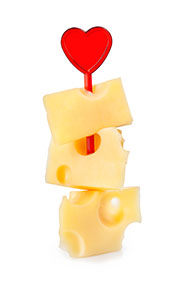
Is cheddar cheese healthy… or is it unhealthy?
Like most foods, there are positives and negatives of cheese, and how healthy (or not) it is will depend on the person.
On the positive side, cheese is perfectly healthy for the majority of people and it has some important health benefits.
While these health benefits are not solely applicable to Cheddar, here are five good reasons to include it in your diet;
1. Cheddar Provides an Excellent Source of Protein
Firstly, as previously shown, Cheddar cheese is a protein-rich food with approximately 25% protein by weight (2).
The majority of this protein is casein.
It’s important to realize that protein is the single most important macronutrient for our health.
While we can get by on carbohydrates or fat for energy, we would quickly waste away if we had no protein source.
Additionally, a higher protein intake brings two major advantages;
- Increasing our protein consumption is clinically proven to improve satiety and reduce food cravings (3, 4, 5).
- Higher protein intakes correspond to increased lean body mass, and increasing protein helps to preserve lean mass during weight loss (6, 7, 8, 9).
Protein is also incredibly important for elderly people, since the amount of protein we can absorb falls as we age.
This is because the rate of muscle-protein synthesis declines with age.
2. Cheddar is Very High in Calcium
Gram for gram, Cheddar offers a substantial amount of calcium.
100 grams provides 72% of the RDA for the mineral, and this works out at about 20% RDA per ounce (28 grams) of cheese.
Calcium is an essential mineral responsible for the optimal functioning of our skeletal and muscular system (10).
Furthermore, we can get calcium – primarily – from two sources;
However, the bioavailability of calcium wildly differs depending upon the source.
One reason for this is that plant foods contain compounds, such as oxalate, phytate and uronic acids that can inhibit the digestion of calcium (11).
In contrast, dairy products such as cheese contain no compounds that can hinder calcium’s absorption.
Only dairy foods offer a guaranteed optimal rate of calcium absorption, and Cheddar cheese is an excellent source of the mineral.
3. Nutrient Density
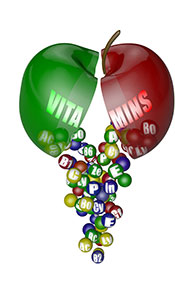
While it can’t compare to leafy greens, meat and fish, Cheddar performs quite well in terms of nutrient density.
For one, it is reasonably rich in micronutrients and contains many minerals in high amounts.
Cheddar is an excellent source of vitamins A, B2, B12, calcium, phosphorus, selenium and zinc.
In addition to the wealth of micronutrients, Cheddar is also one of the best dietary protein sources.
Compared to food such as sugar, refined carbs, or even other dairy options like butter, cheese is an excellent source of nutrition.
4. Cheddar Is a Source of Fermented Dairy
While all sources of fat have been unfairly demonized in the past, we now understand that whether fat is ‘good’ or ‘bad’ depends on the type, dose, and specific food.
On this note, systematic reviews and randomized controlled trials suggest that dairy fat is nothing to worry about.
Notably, several studies find that high-fat dairy foods are neutral – or possibly even protective – against a variety of chronic diseases;
- A systematic review of 18 studies found that cheese is inversely associated with stroke risk in Asian populations (12).
- High-quality evidence shows a clear reduced risk of hypertension as dairy intake increases. Additionally, the weight of the evidence suggests that fermented high-fat dairy has a favorable effect on stroke risk, with neutral effects for type 2 diabetes (T2D) and cardiovascular disease (CVD) (13).
- A systematic review of 52 clinical studies investigated how dairy consumption affected markers of inflammation. The data across all 52 studies strongly indicated dairy – including fermented dairy like cheese – had anti-inflammatory activity in subjects, except for the minority who had a milk allergy (14).
5. Cheddar is a Source of Probiotics
As an aged fermented cheese, Cheddar is full of probiotics; supposedly beneficial live bacteria that grow in certain foods.
Studies show that these bacteria survive the lengthy cheese-making and aging process (15).
Recently, we can hear a lot in the media about the microbiome and the positive effects of these beneficial gut bacteria.
Is there any truth to it?
To be honest, research on the microbiome is in its infancy and much more research is needed.
However, initial studies do suggest there could be some promising benefits.
Among these, probiotics found in cheese may help to protect against harmful bacteria in the gut and improve overall colonic health (16).
Negative Points About Cheddar
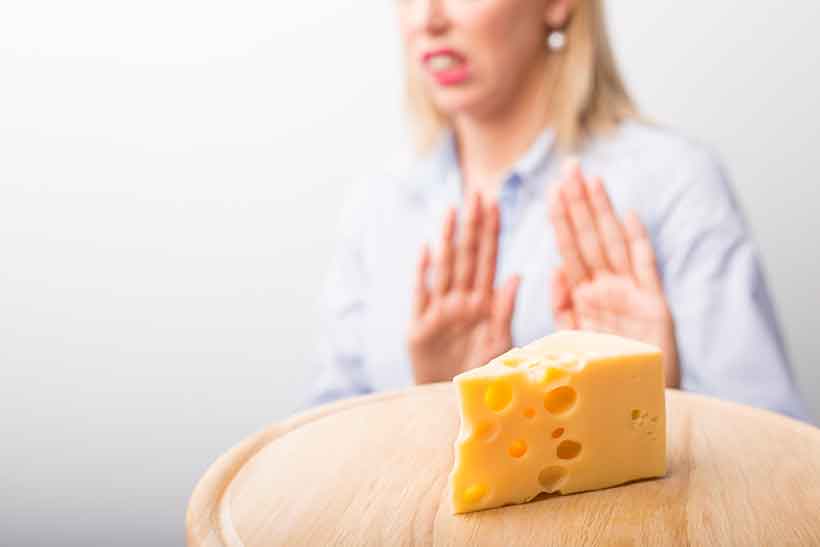
It is probably fair to say that no food is ‘healthy’ for everyone and Cheddar cheese is no exception.
The potential negatives primarily relate to lactose/dairy allergies and the energy density.
1. Cheddar Contains a Small Amount of Lactose
Lactose is a type of milk sugar found in dairy products.
Globally, lactose intolerance is a big issue and approximately 65-70% of the world’s population are lactose intolerant (17).
These figures can be as low as 10% in Northern Europe but as high as 90% in certain parts of the world (18).
Lactose deficiency develops in some adults since they stop producing the digestive enzyme ‘lactase’ after early childhood.
Lactase is the enzyme that is necessary to digest lactose properly.
Unfortunately, when people with lactose intolerance consume lactose they may develop a range of uncomfortable symptoms. These may include abdominal pain, bloating, diarrhea, flatulence, gas and nausea, among others (19).
Many People With Lactose Issues Can Tolerate Cheddar
On the positive side, Cheddar cheese is very low in lactose.
Therefore, it is unlikely to be a problem for most people.
Many people who can’t tolerate milk will often be able to tolerate hard cheese such as Cheddar (20).
For example, fresh milk contains approximately 5% lactose, but Cheddar only contains a maximum 0.5% lactose (2).
As mentioned earlier, longer aged Cheddar cheese will contain minimal traces of lactose, so ‘extra mature’ and ‘vintage’ varieties are good options.
This is because bacteria progressively consume the lactose (sugar) content of cheese during fermentation.
2. Cheddar Cheese is High in Calories
Firstly, it important to remember that a food being high in calories doesn’t mean it is unhealthy.
Secondly, there is nothing especially fattening about cheese, and nutrient-density is a much better judge of a food’s relative health merits.
That said, if we over-consume high-calorie foods then it is easier to put on weight or stall weight loss.
A portion or two of cheese per day?
That is no problem, and it will provide an excellent source of protein and calcium.
However, melting 200 grams of Cheddar cheese onto your steak? Or a plate of pasta covered in huge amounts of cheese?
Those calories will quickly add up, especially if it is a regular thing.
3. Dairy Allergies / Sensitivities
First of all, genuine dairy allergies are very rare, with a prevalence rate of only 0.6% in Europe (21).
A severe cheese/dairy allergy can cause a range of reactions, with the worst being anaphylaxis.
Anaphylactic shock is a major and potentially life-threatening allergic reaction.
Cheese/dairy often gets a bit of bad press due to allergy/sensitivity issues, especially on the Internet.
Despite this, people are allergic to all sorts of different food, medicines and substances.
Most importantly, just because some people are allergic to cheese/dairy does not mean it is bad for the rest of us.
How Is Cheddar Cheese Made?
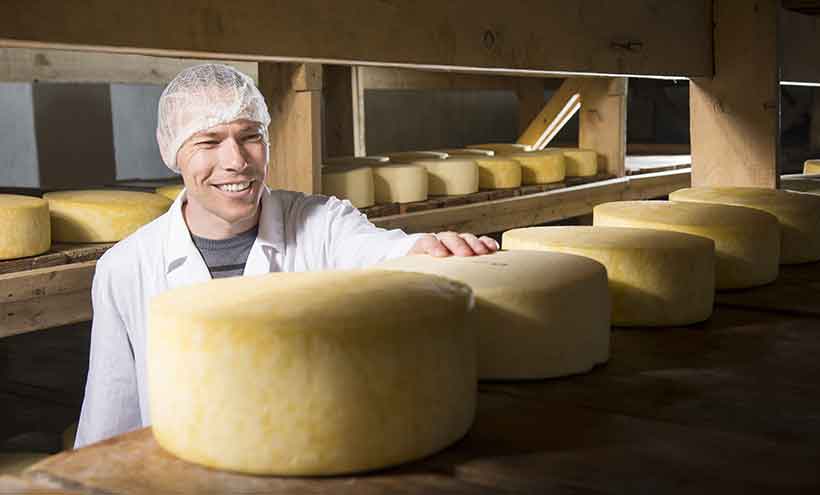
If you have ever wondered how Cheddar is made, here is a quick look at the process.
First of all, the cheesemaker will gather three necessary ingredients;
- Fresh, unpasteurized milk
- Bacterial starter culture(s)
- Rennet (helps to separate the curds and whey)
- Salt
The Production Process
Cheddar can be made either pasteurized or non-pasteurized. However, in modern cheesemaking, it is rare to find unpasteurized Cheddar.
In a typical production process, the cheesemakers will start by heating the milk to a temperature high enough to kill any bacteria.
Following this, starter cultures (bacteria) are added to the milk alongside rennet, which helps the milk to curdle. The remaining liquid (whey) can then be removed from the cheese.
Next, after the cheese has set, the cheesemakers cut the curds into small pieces to make salting easier.
In addition to helping the flavor, salt also acts as a natural preservative and helps to ensure the fermentation process goes smoothly. Adequate salt ensures that no pathogenic bacterias develop.
Once the Cheddar curds have been salted, they are pressed into large, solid slabs of cheese weighing upward of 20 kilograms. These moulds of cheese are then vacuum-packed and stored in boxes to ferment/mature.
As discussed earlier, this fermentation process will ordinarily last anywhere from three to eighteen months.
However, rare artisan Cheddar cheese may be aged for anywhere up to five or even ten years.
You can see a typical Cheddar production process in the video below;
5 Delicious Cheddar Cheese Recipes
If all this talk of Cheddar makes you hungry, then here are five tasty cheese recipes to try out.
1. Melted Cheddar and Bacon Chicken Breasts
Chicken breasts are a little boring aren’t they?
But it’s easy to make them tastier, and cheese and bacon does just the job.
Ingredients (per person)
- 1 chicken breast
- 2 slices of bacon
- 1 tbsp of olive oil (or butter)
- 1 oz (30 g) Cheddar cheese
Instructions
2. Creamy Broccoli Cheddar Soup
Broccoli and cheese always work well together, and a creamy broccoli and Cheddar soup tastes great.
Ingredients (serves 4)
- 1.5 cups (355 ml) chicken stock
- 1 cup (240 ml) heavy cream
- 1 cup (240 ml) milk
- 2 cups (145 g) broccoli
- 7 oz (200 g) Cheddar cheese
- 1 medium onion
- 1 tbsp olive oil
- 2 garlic cloves (mashed)
- 1 tsp mustard
- Salt and pepper to taste
Instructions
3. Cheddar Cheese and Ham Omelet
Cheese and ham is a traditional combination and it works well in just about everything, including omelets.
Ingredients (per person)
- 3 eggs
- 2 oz (56 g) ham (bacon or sausage is also fine)
- 1.5 oz Cheddar cheese
- 1 tbsp butter
- Salt and pepper
Instructions
4. Cheddar and Egg Avocado “Boats”
A baked avocado with egg and Cheddar cheese offers a simple meal that is full of protein, healthy fats, vitamins and minerals.
Ingredients
- 1 avocado
- 2 eggs
- 1 oz (28 g) grated Cheddar cheese
- Salt and pepper (to taste)
Instructions
5. Cheddar Cheese and Wine Platter
OK, this one isn’t really a recipe as such, but if you like wine (or even if not) a cheese platter is a simple and delicious meal.
Use Cheddar, any other cheese, possibly some cured meat such as prosciutto or salami, and a bit of fruit.
This meal is easy to make, quick and convenient.
It is also difficult to top in the taste department!
Final Thoughts
Cheddar is a traditional cheese with a very long history, it is reasonably nutritious and provides several health benefits.
Additionally, it tastes great either by itself or as part of a recipe.
If you’re looking for a great-tasting nutritious ingredient, it is hard to beat Cheddar cheese.

